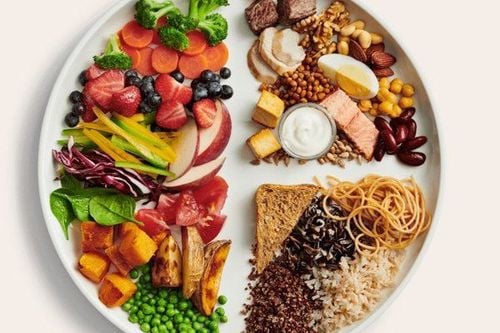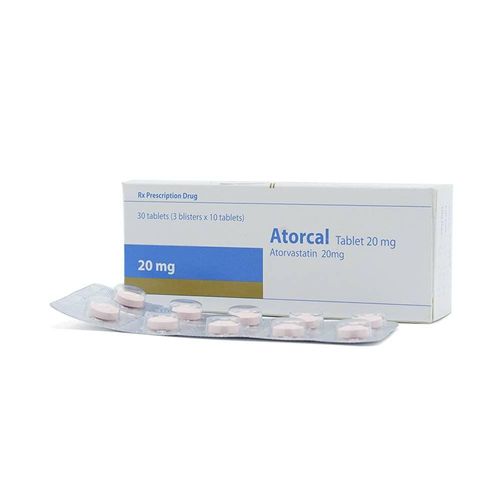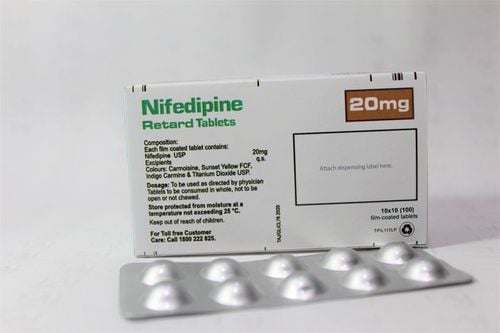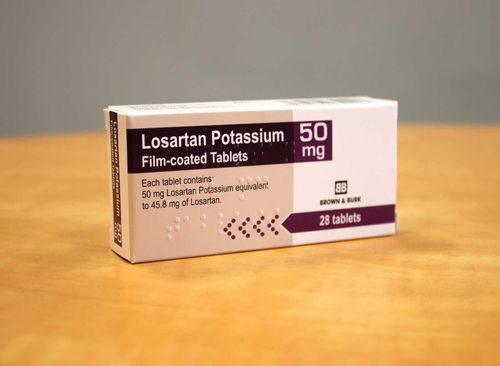This is an automatically translated article.
Cardiovascular disease (CVD) is the leading cause of death in Western countries, accounting for nearly 30% of all deaths worldwide. In fact, dietary interventions allow for better combinations of foods and nutrients. Therefore, a healthy diet shows more beneficial effects than the effects of a single nutrient supplement. This article provides useful nutritional recommendations for patients with cardiovascular disease.1. Heart disease and food for people with heart disease
Diets high in saturated fat promote the formation of plaque in your arteries and make it easier for these plaques to rupture and cause an immediate blockage. When this occurs in the coronary arteries that supply oxygen and nutrients to the heart, symptoms develop.A plant-based, low-fat whole food diet helps with recurrent heart disease and significantly reduces short- and long-term consequences. This is the only way of eating that has been scientifically proven to prevent and reverse heart disease, not only helping to end the chronic aspect of the disease but also improving quality of life and increasing longevity:
In one study, patients in a randomized controlled trial with moderate to severe heart disease following a plant-based low-fat diet (in addition to other lifestyle changes) demonstrated remission of coronary atherosclerosis at 1 year and continued remission at 5 years and had less than half the number of cardiovascular events compared with patients receiving usual care.
198 consecutive coronary heart disease patients who switched to a plant-fat low-fat diet in addition to their usual cardiovascular care regimen experienced only 1 major cardiac event of them at an average of 3.7 years of follow-up, The recurrence rate was only 0.6 %.
2. A heart-healthy diet: 8 steps to prevent heart disease
While you probably know that eating certain foods can increase your risk of metabolic cardiovascular disease, changing eating habits can often be difficult. Whether you've had years of unhealthy eating or you simply want to tweak your diet, here are eight heart-healthy diet tips. Once you know which foods to eat more of and which foods to limit, you'll be on your way to a heart-healthy diet.2.1. Control your portion sizes How much you eat is just as important as what you eat. Eating too much, eating quickly, and eating until you're full can lead to overeating more calories than you need.
You can follow some simple tips to control portion sizes that can help you shape your diet and also your heart and waistline:
Use small plates or bowls to help control your food rations. Eat plenty of low-calorie, nutrient-dense foods, such as fruits and vegetables. Eat small amounts of high-calorie, high-sodium foods, such as refined, processed, or fast foods. Tracking portion sizes is equally important. A few things to keep in mind: A serving is a specific amount of a food and is determined by common measurements like cups, ounces, or pieces. For example, one serving of pasta is about 1/3 to 1/2 cup, or about the size of a hockey puck. One serving of meat, fish or chicken is about 54 to 82 grams, or about the size and thickness of a deck of cards. The recommended number of servings for each food group can vary depending on your specific diet or guidelines you're following. You may need to use measuring cups and spoons or scales until you are used to dividing each food item.

Người mắc bệnh tim nên kiểm soát khẩu phần ăn sao cho phù hợp
Vegetables and fruits can be easily added as a good source of vitamins and minerals. They are also low in calories and high in fiber. Fruits and vegetables, like other plants or fruit foods, in your diet. Store washed and chopped vegetables in the refrigerator for a quick snack during the day. Keep the fruit in a bowl in the kitchen or where you can easily see it so you'll remember to eat it. Choose recipes that include vegetables or fruit as the main ingredient, such as vegetable stir-fries or fresh fruit mixed into a salad.
| Trái cây và rau củ nên lựa chọn | Trái cây và rau củ cần hạn chế |
|
- Rau và trái cây tươi hoặc là đông lạnh - Các loại rau đóng hộp ít natri - Trái cây đóng hộp, đóng gói có trong nước trái cây hoặc nước |
- Dừa - Rau với nước sốt kem - Rau củ chiên hoặc tẩm bột - Trái cây đóng hộp đóng gói có trong si-rô nặng - Trái cây đông lạnh có thêm đường |
| Các sản phẩm ngũ cốc nên lựa chọn | Các sản phẩm ngũ cốc nên hạn chế |
|
- Bột mì - Bánh mì nguyên hạt, tốt nhất là bánh mì 100% lúa mì hoặc bánh mì 100% ngũ cốc nguyên hạt - Ngũ cốc giàu chất xơ với 5g chất xơ trở lên có trong một khẩu phần - Ngũ cốc nguyên hạt gồm gạo lứt, lúa mạch và kiều mạch (kasha) - Mì ống nguyên chất - Bột yến mạch (cắt thép hoặc thường) |
- Bột mì trắng, tinh chế - Bánh mì trắng - Bánh nướng xốp - Bánh quế đông lạnh - Bánh ngô - Bánh rán - Bánh quy - Bánh mì nhanh - Bánh - Bánh nướng - Mì trứng - Bắp rang bơ - Bánh quy snack giàu chất béo |
The American Heart Association offers the following guidelines for how much fat to include in a heart-healthy diet:
| Loại chất béo | Lượng khuyến nghị |
| Chất béo bão hòa | Ít hơn 6% tổng lượng calo hàng ngày. Nếu bạn ăn 2.000 calo mỗi ngày, thì đó là khoảng 11 đến 13 gam. |
| Chất béo trans | Tránh |
There are simple ways to cut back on saturated and trans fats:
Cut back on fat or choose lean cuts of meat with less than 10% fat. Use less butter and margarine when cooking. Use low-fat alternatives when possible for a heart-healthy diet. For example, toss baked potatoes with low-sodium salsa or low-fat yogurt instead of butter, or use sliced fruit or low-sugar fruit on toast instead of margarine. Regularly check the food labels of cookies, cakes, cookies, crackers, and chips. Not only are these foods low in nutritional value, some — even those labeled reduced fat — may contain trans fats. Trans fats are no longer allowed to be added to foods, but older products may still contain them. Trans fats may be listed as partially hydrogenated oils on ingredient labels.
| Chất béo nên lựa chọn | Chất béo nên hạn chế |
|
- Dầu ô liu - Dầu canola - Dầu thực vật và hạt - Bơ thực vật sẽ không chứa chất béo chuyển hóa - Bơ thực vật làm giảm cholesterol như Benecol, Promise Activ hoặc Smart Balance - Hạt quả hạch - Bơ |
- Mỡ lợn - Mỡ thịt xông khói - Nước thịt - Sốt kem - Người sáng tạo không theo đạo đức - Bơ thực vật hydro hóa và rút ngắn - Bơ ca cao, có trong sô cô la - Dầu dừa, cọ, hạt bông và hạt cọ |
An easy way to add healthy fats (and fiber) to your diet is to use ground flaxseeds. Flaxseeds are small brown seeds that are high in fiber and omega-3 fatty acids. Studies have shown that flaxseed lowers unhealthy cholesterol levels in some people. You can grind flaxseeds in a coffee grinder or food processor and stir a teaspoon of them into yogurt, apple sauce, or hot cereal.
2.5. Choose low-fat protein sources Lean meat, poultry and fish, low-fat dairy products, and eggs are some of your best sources of protein. Choose lower-fat options, such as skinless chicken breast instead of fried chicken pieces, and skim milk rather than whole milk.
Fish is a good substitute for high-fat meats. Certain types of fish are rich in omega-3 fatty acids, which can lower blood fats called triglycerides. You'll find the highest amounts of omega-3 fatty acids in cold-water fish, such as salmon, mackerel, and herring. Other sources include flaxseeds, walnuts, soybeans and canola oil.
Legumes - beans, peas and lentils - are also good sources of protein, low in fat and cholesterol-free, making good substitutes for meat. Substituting plant protein for animal protein — for example, a soy or pea burger for a hamburger — will lower your fat and cholesterol levels and increase your fiber intake.
| Protein nên lựa chọn | Protein cần hạn chế hay nên tránh |
|
- Các sản phẩm từ sữa ít béo như sữa tách béo hoặc ít béo (1%), sữa chua và pho mát - Trứng - Cá, đặc biệt là cá nước lạnh, béo như cá hồi - Gia cầm không da - Cây họ đậu - Đậu nành và các sản phẩm từ đậu nành như bánh mì kẹp thịt đậu nành và đậu phụ - Thịt nạc xay |
- Sữa nguyên chất béo và những sản phẩm từ sữa khác - Thịt nội tạng, chẳng hạn như gan - Thịt mỡ và đá cẩm thạch - Xúc xích - Thịt ba chỉ - Thịt chiên hoặc tẩm bột |
Healthy adults have no more than 2,300 milligrams (mg) of sodium per day (about a teaspoon of salt) Most adults ideally have no more than 1,500 mg of sodium per day Although reducing the amount of salt you add to foods on the table or during cooking is a good first step, but most of the salt you eat comes from canned or processed foods, such as soups, pies, and dinners Frozen. Eating fresh foods, making soups or stews can reduce salt intake.
If you like the convenience of canned soups and prepared meals, look for those with no added salt or reduced sodium. Be wary of foods that are said to be lower in sodium because they are seasoned with sea salt instead of regular table salt - sea salt has similar nutritional values as regular salt.
Another way to reduce salt intake is to choose seasonings carefully. Many spices are available in reduced sodium versions and salt substitutes that can add flavor to your dishes with less sodium.
| Các món ít muối nên lựa chọn | Các món có nhiều muối cần hạn chế hay nên tránh |
|
- Các loại thảo mộc và gia vị - Hỗn hợp gia vị không muối - Súp đóng hộp hoặc bữa ăn chế biến sẵn không thêm muối hoặc ít muối - Các phiên bản giảm muối của gia vị, chẳng hạn như nước tương giảm muối và tương cà ít muối |
- Muối ăn - Súp đóng hộp và thực phẩm chế biến sẵn, chẳng hạn như bữa tối đông lạnh - Nước ép cà chua - Gia vị, chẳng hạn tương cà, sốt mayonnaise và nước tương |
For example, if you eat grilled salmon one evening, try a black bean burger the next night. This will help ensure that you're getting all the nutrients your body needs. Variety also makes your meals and snacks more enjoyable.
2.8. Give yourself a treat every now and then. A candy bar or some chips won't compromise your heart-healthy diet. But don't let it be an excuse to give up on your healthy eating plan. Remember the exception is still the exception and it can't be the rule, you will balance things out in the long run. It is important that you always eat healthy foods.
Please regularly follow Vinmec website (www.vinmec.com) to update useful health care information and leave information when you need medical advice and support!
Please dial HOTLINE for more information or register for an appointment HERE. Download MyVinmec app to make appointments faster and to manage your bookings easily.
References: healthline.com, doctorsfornutrition.org, mayoclinic.org












